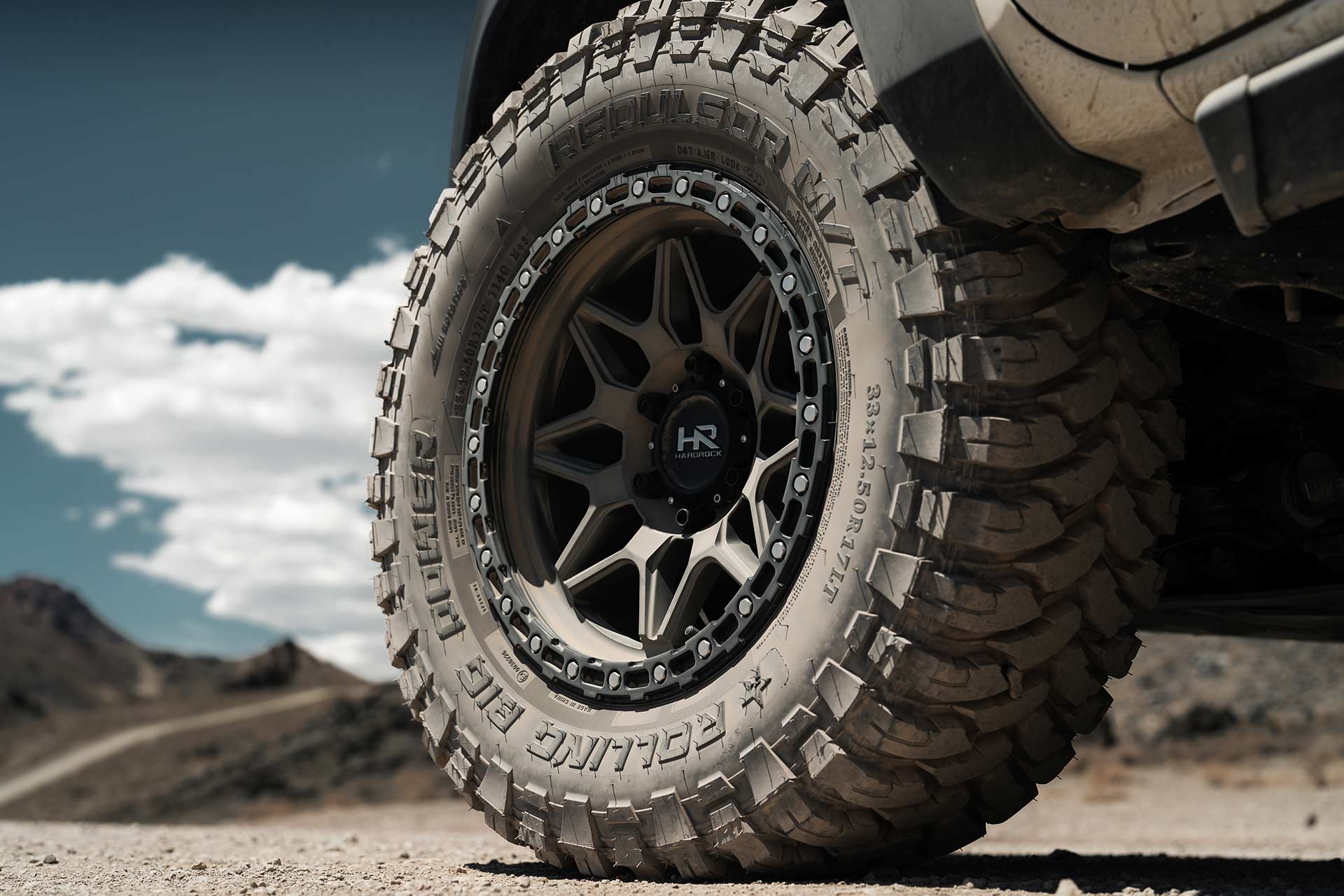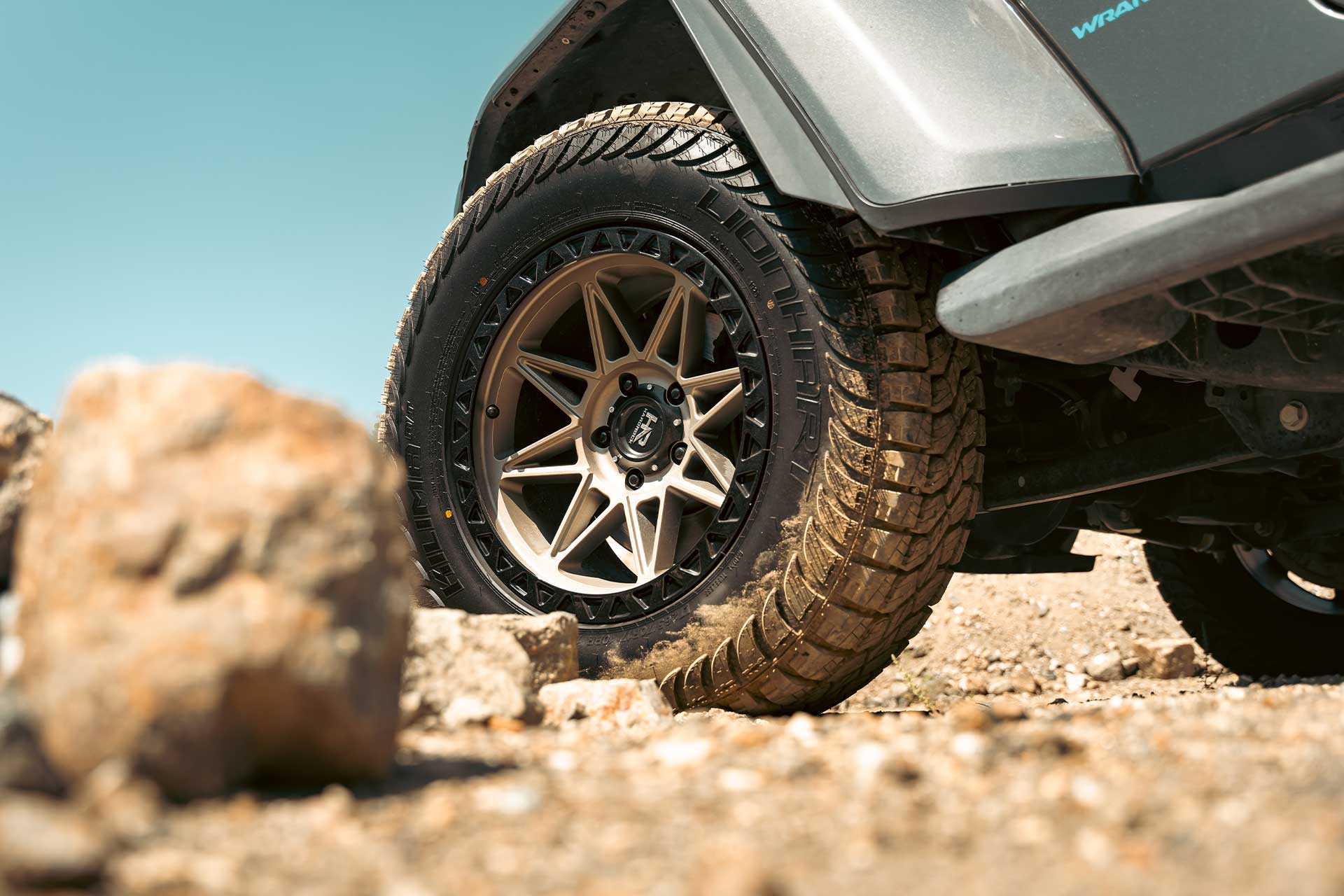Wheel Spacers & Adapters for Off-Road Rigs
The right wheel fitment dictates how your rig handles challenging terrain. Every millimeter of offset and backspacing affects clearance, stability and stress your suspension goes through during trail runs or rock crawling.
Off-road wheel spacers and off-road adapters have become increasingly common when running into clearance issues or when bolt patterns don’t match. Here’s what you need to know: quality wheels with the correct diameter, width and offset should always be your first priority. While incredibly useful, spacers and adapters should serve as backup solutions for specific scenarios.
In this guide, we’ll cover the technical realities (and limitations) of off-road spacers and off-road wheel adapters. From their construction, safety considerations, proper installation requirements, and most importantly, when proper wheel selection eliminates the need for them.

Understanding Wheel Spacers
Spacers are precision-engineered metal rings that mount between your truck’s hub and wheel, pushing the wheel outward from the vehicle’s centerline. In simpler terms, spacers essentially create artificial negative offset. For example, if you have a +12 offset and add 12mm spacers, you effectively end up with a +0 offset. What spacers do is create additional space in the wheel well to enable fitment of bigger tires or to correct rubbing and clearance issues.
What’s the difference between spacers and adapters? Spacers maintain your existing bolt pattern (PCD) to increase track width, while adapters mount to your hub with one bolt pattern and use an entirely different bolt pattern on the outside—combining the effect of spacers while converting the bolt pattern.
Types of Spacers
Slip-On Spacers
Slip-on spacers can range from 2mm up to 30mm. These metal rings slide directly over your factory wheel studs, sandwiched between the hub and the wheel. These types of spacers work great for minor adjustments that call for a few millimeters, but require at least 6 to 8 complete threads engaged for safe operation.
So what this essentially means is there’s no chance you can use a 30mm spacer with the OEM wheel studs. The second you can’t hit that 6-8 thread count, you’ll need to run extended wheel studs or do a wheel bolt conversion to maintain adequate thread engagement.
Bolt-On Spacers
Bolt-on spacers typically start at about 1″ thickness, or 25mm, and feature integrated studs. You first bolt the spacer to your rig’s hub using the manufacturers provided lug nuts, then you mount your wheels onto the integrated studs using a second set of lug nuts, which aren’t usually provided. This dual-mounting setup creates a more secure connection that’s less likely to come loose under load.
Which Spacers Are Best?
There’s no best in terms of the type of spacer you use, so long as you use the right type for your specific needs. However, what makes the real difference is the quality of the spacer. Premium spacers are typically made from 6061-T6 billet aluminum with Grade-8 hardware. Red flags in cheaper spacers include unspecific aluminum grades, generic hardware, and visibly poor machining quality.
Off-roading demands high-quality components because when you’re on the trail, weak points in your build are amplified.
Pro-Tip: Understanding your vehicle’s bolt pattern specifications helps you verify spacer compatibility before purchase.
Understanding Wheel Adapters
So what’s a wheel adapter? Adapters combine the function of spacers but with the addition of bolt pattern conversion capability. Adapters bolt directly to your truck’s hub using one bolt pattern, then present a totally different bolt pattern on the other end. For example, you could use an adapter to convert 6×5.5″ (6×139.7) to 6×135 to fit wheels that aren’t offered in a 6×5.5″/6×139.7 PCD.
That said, any manufacturer who’s worth their salt will never produce or suggest an 8-lug to 6-lug conversion. This creates a weight distribution imbalance and is a critical safety concern. Just get the right wheels.
Are wheel adapters safe? Yes, as long as you utilize high-quality adapters and operate under proper conditions. But the truth is: proper wheel fitment eliminates the need for adapters entirely. With such a thriving off-road community, there are tons of manufactures who make solid off-road wheels with virtually every bolt pattern…including us!
Safety Considerations: Are Wheel Spacers Safe for Off-Roading?
Are wheel spacers safe for off-roading? High-quality, billet aluminum spacers are proven to be safe for light to moderate trail use when properly installed and maintained. Safety from using spacers almost always comes down to quality, installation, and ongoing maintenance. At Hardrock Offroad, we strongly suggest professional installation.
Limitations
There are some limitations when running spacers and adapters: they’re not ideal for extreme off-road use. Rock crawling, aggressive trail driving, and high-speed pre-running put these components under a lot of stress and they’re not designed to handle that stress long-term. Is it impossible? No, but just make sure to take the proper precautions during install.
Every millimeter you space your wheels out from the hub increases leverage on suspension components. Ball joints, wheel bearings, and tie rods experience more stress during normal operation and even more so during off-road use.
Installation
Proper torque specs vary by vehicle make and spacer manufacturer, but never use an impact gun for final torque down. Using calibrated torque wrenches provide the accuracy and precision required. Thread locker, typically red Loctite, prevents fasteners from backing out under vibration. Retorqueing happens after the first 50 to 100 miles of driving after initial install, then at every tire rotation thereafter. Additionally, always opt for hub-centric fitments to ensure the spacer or adapter centers properly on your hub.
Wheel Fitment Is Always Priority #1
Custom offset designed specifically for your application eliminates the need for spacer completely. These days, wheels are manufactured with the precise dimensions your build requires to avoid clearance issues and premature suspension wear and tear.
Reduced stress on suspension components translates directly to longer component life and fewer trail-side failures. No additional maintenance requirements means no retorque schedules, no wondering if your spacers have loosened since your last trail ride. Understanding wheel offset fundamentals empowers you to select wheels that fit correctly from the start.
Measuring for proper clearance requires patience and precision. Working with wheel specialists accelerates the fitment process dramatically—experienced professionals have seen thousands of builds and understand which offset ranges work for various lift heights and tire sizes. Verify wheel load capacity meets your vehicle’s requirements before purchasing.
Utilize a backspace calculator to verify fitment before ordering wheels. Learning how tire size affects wheel requirements helps you plan modifications that work together rather than require endless adjustments.
Building a serious off-road rig demands components engineered for punishment. Aggressive trail driving or rock crawling generates suspension articulation, lateral forces, and impact loads that stress spacers and adapters beyond their design parameters. If you’re considering beadlock wheels for extreme terrain, you’ve already exceeded the appropriate use case for spacers.

Common Questions Answered
Are wheel spacers safe for off-roading?
Yes, high-quality wheel spacers made from billet aluminum are safe for light to moderate trail use when installed properly, but not ideal for extreme off-road conditions like rock-crawling, pre-running or competitive racing.
Are wheel adapters safe?
The same logic applies here. As long as they're high-quality adapters you can safely run them under the same conditions as spacers, however proper wheel fitment with the right offset is always the superior solution.
wheel fitment with the right offset is always the superior solution. Do I need extended wheel studs?
You only need to run extended studs when using slip-on spacers that reduce thread engagement below safe minimums—you need a minimum of 6 to 8 complete threads engaged between wheel studs and lug nuts.
How often should I retorque?
Retorque after 50 to 100 miles of initial install, then again at every tire rotation—typically every 5,000 to 8,000 miles. Off-road use may justify checks after every trail outing.
Building Your Rig the Right Way
Off-road wheel spacers and off-road wheel adapters serve specific purposes. High-quality, billet aluminum spacers and adapters operate safely when properly installed and maintained, but they’re not always ideal for heavy-duty off-road use.
The fundamental truth remains unchanged: proper wheel fitment with correct offset and backspacing eliminates the need for spacers or adapters while providing better reliability, reduced maintenance, and longer suspension component life. When clearance issues arise or bolt patterns don’t align with your wheel choices, consider whether the real solution involves different wheels rather than adding spacers or adapters.
The off-road wheel market offers a huge variety across nearly every common bolt pattern. Wheels designed specifically for off-road applications deliver the strength, load capacity, and fitment your rig needs. Components that work together, rather than against each other always perform better on the trail.
Build with purpose, and buy the right wheels from the start.

